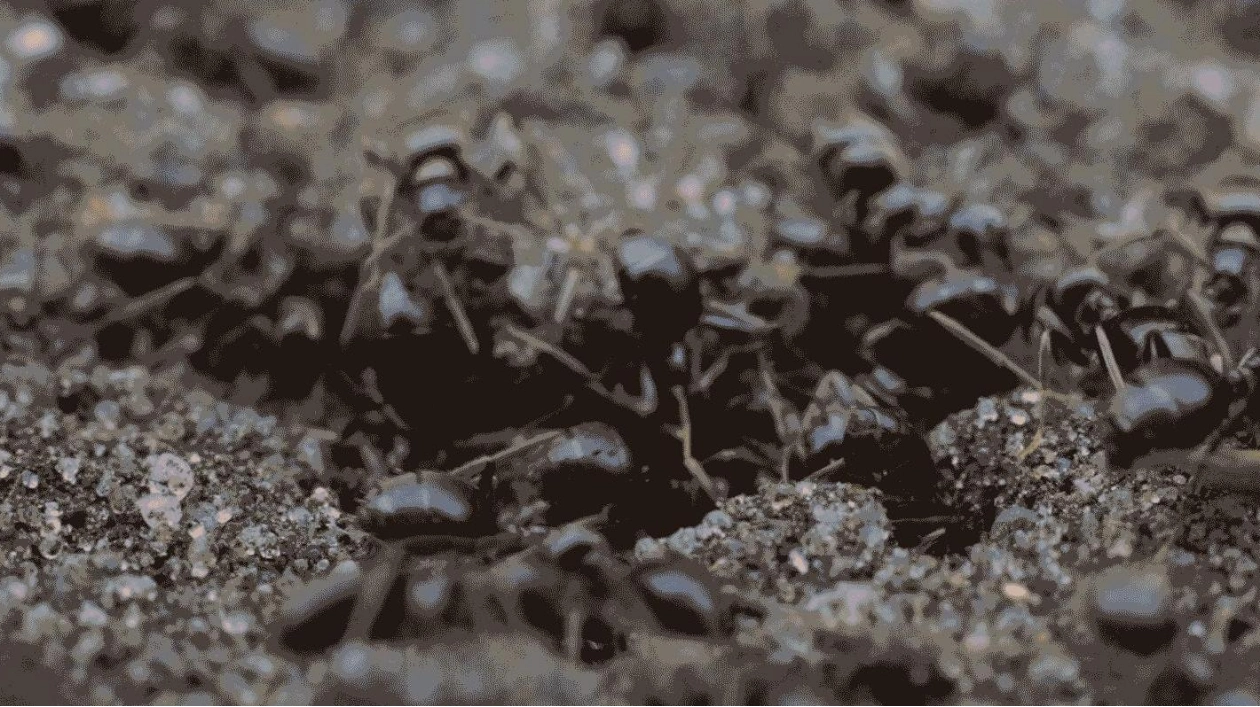If an infection takes hold in an ant colony, it could spell disaster for the entire community. However, certain worker ants seem to have a solution for this problem. When exposed to pathogens, black garden ants (Lasius niger) modify their nest layout in ways that could potentially slow the spread of disease, according to a new study.
Several animals are known to change their behavior to avoid infections, including humans, guppies, and mice. But this is the first evidence of nonhuman animals actively altering their environment in response to infections, researchers report on September 2 in a paper posted at bioRxiv.org. The preprint has not yet been peer-reviewed.
Science News is gathering reader questions about navigating our planet's changing climate. What do you want to know about extreme heat and its role in extreme weather events?
Limiting social contact—through measures like social distancing—is believed to be an effective barrier against disease spread (SN: 3/13/20). Humans also modify spatial networks by, for example, designating parts of a building or city as quarantine zones or expanding urban areas. To investigate whether ants behave similarly, Nathalie Stroeymeyt and her team at the University of Bristol in England allowed 20 groups of 180 black garden ants to excavate nests in soil-filled jars. The day after excavation began, the researchers added 20 more worker ants to each jar, with half of the jars receiving groups infected with a fungal pathogen.
Over the next six days, the researchers monitored the ants' behavior using video and micro-CT scans to study the evolution of their nests. Ant colonies exposed to the pathogen dug nests faster and initially created more tunnels than healthy colonies. After six days, they made several structural modifications, including spacing entrances 0.62 centimeters farther apart on average. The exposed colonies also placed chambers—which house colony resources such as queens, their brood, and food—in less central locations. Ants infected with the fungus spent more time at the surface than their uninfected counterparts, which the study suggests is likely a form of self-isolation.
The team then used spatial network analysis and disease transmission simulations to determine if these changes would affect disease spread in the nests. By simulating the introduction of a pathogen into the designs of both exposed and unexposed colonies, the team found that ant colonies in the disease-resistant redesigns would have significantly lower fungal loads—and fewer lethal doses—than those in nests built without prior exposure to disease.
The findings are intriguing, though not entirely unexpected, says Sebastian Stockmaier, a behavioral disease ecologist at the University of Tennessee, Knoxville. Social insects like ants, bees, and termites have evolved various colony-level defenses to manage diseases effectively, he says, and large-scale outbreaks are uncommon. Group living generally increases the risk of disease, and this risk is particularly high in social insects due to their low genetic diversity and frequent social interactions, which facilitate disease spread. Consequently, when faced with disease, “their strategies are usually aimed at protecting the group as a whole, rather than focusing on the individual,” says Stockmaier.
Questions or comments on this article? E-mail us at feedback@sciencenews.org | Reprints FAQL. Leckie et al. Architectural Immunity: ants alter their nest networks to fight epidemics. bioRxiv.org. Posted September 2, 2024. doi: 10.1101/2024.08.30.610481.
We are at a critical juncture, and supporting climate journalism is more crucial than ever. Science News and our parent organization, the Society for Science, need your assistance to enhance environmental literacy and ensure that our response to climate change is grounded in science.
Please subscribe to Science News and add $16 to expand science literacy and understanding.






